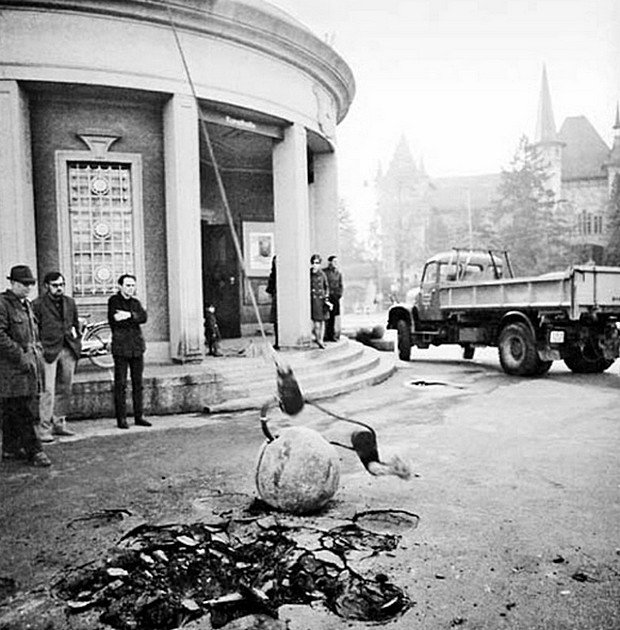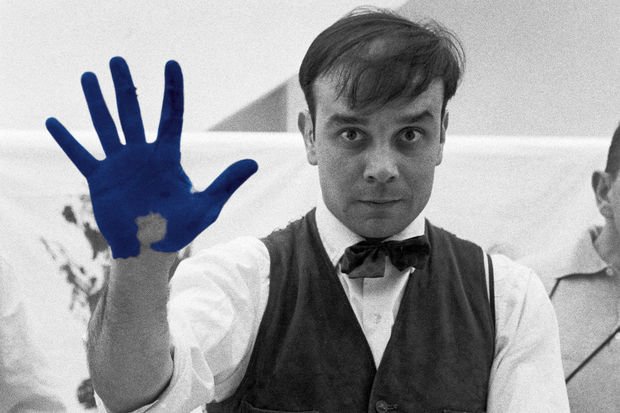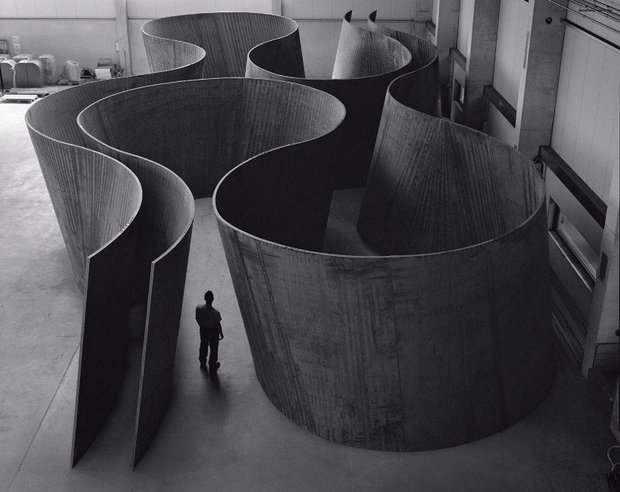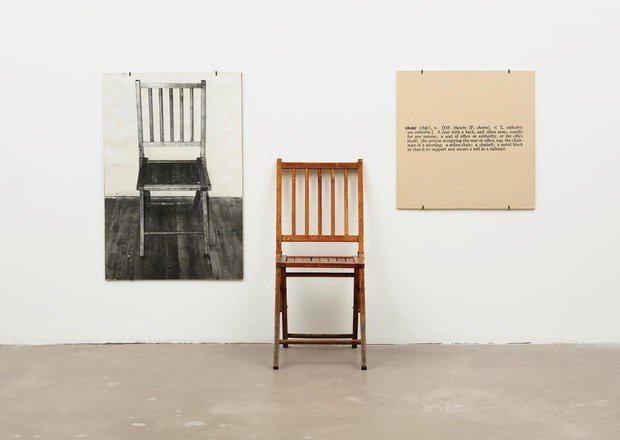Trip to theoretical peak: how to understand what conceptual art is
Aleksandra Danilova’s lecture about the ''complicated'' and ''tedious'' movement of art with understandable words
Senior fellow of the Pushkin State Museum of Fine Arts, expert in American pop art and culture in the late 20 th century Aleksandr Danilova gave a lecture on conceptual art within a joint project of the Contemporary Art Gallery Tatarstan State Museum of Fine Arts and the Moscow Contemporary Art. Realnoe Vremya's journalist made a summary of the lecture.
Is conceptualism and conceptual art the same thing?
The topic of conceptualism, conceptual art isn't so complicated as it might seem at first sight. Conceptualism is probably the most frightening movement in the 20 th century because it's always associated with something boring, tedious and somehow crabbed. Moreover, there is confusion about conceptualism and the strange concept of ''conceptual art''. Many people think it's the same thing.
When talking about conceptualism, strict selection criteria are used. It can be said without doubt that conceptualism is a kind of theoretical peak of the 20 th century art that goes to an absolute speculative reason when art is estimated from a point of an idea. The equality sign can be put between conceptualism and existence of the idea as it is. It may not have any material coat. In this sense, a composition of conceptualism is very deceiving.
The famous exhibition staged by American curator, one of the ideologists of conceptualism Seth Siegelaub is one of the important starting points in the art of conceptualism. The exhibition, which didn't have any name, was called by exposition dates only in 1969 – January 5-31. The exhibition, which was in California, was the exposition whose introduction said it consisted of a catalogue about the presence of works in exhibition space and was an absolutely free addition to this catalogue. The most interesting thing is that the catalogue also consisted of different images without any text and explanation. This is why it was quite difficult to understand the compositions.
Having a strict attitude to conceptualism as a phenomenon, you will find that it is a very local story that includes ten artists whose names are well known. Pure conceptualism existed for a short time – the late 60s-early 70s. The problem is that the changes that take place in art were decisive and radical. Conceptualism appeared and turned all art into conceptual. This is why this pure aesthetical view that often existed in European and American art doesn't have a right to exist now. I think because we all wait for art to say something.

When we come to an exhibition and look at a work, we ask the favourite question – what did an artist want to say? We look for an idea, a conceptual content. The thought that this conceptual content may not exist is absolutely unallowable. Together with conceptualism, conceptual content that changes the attitude to art arrives. It turns into an exhibition project. Project thinking appears, the importance of the profession of curator appears. If we look at the chronology of 1969, curator Harald Szeemann's legendary exhibition When Attitudes Become Form in Switzerland, in Bern, that is considered as the first important project of a curator. The first attempt to formulate one's own vision of European art, European stage of art was made. The experience that Andrey Monastyrsky, one of the leaders of Russian conceptualism, got is interesting. He decided to make a list of pieces of art of pure conceptualism of all times and peoples several years ago. According to him, 49 compositions of conceptualism were created in the world in total. Indeed, there is a very small number of them. On the other hand, any composition can have a conceptual implication.
Conceptualists refuse market
There is a point of view that conceptualism was a reaction to pop art and those changes taking place in art under the influence of pop art that made compositions banal, recognisable, bright and allowed to borrow plots, ways of presentations, promotion strategies from commercial art. Pop art made another awful thing that Andy Warhol launched. An artist became an absolutely public figure whose life is interesting for the audience as well as his art. He started to create pieces of art like a conveyor belt. For instance, Warhol's factory made 2,500 pieces of art for 5 years of existence. It is mass, well-oiled production. The last gestures came to that Andy Warhol offered compositions through Christmas sales of American supermarkets. So the artist returns art products to the sphere of consumption. One of the reproaches is that pop art levelled art and the market.
Conceptual artists leave the sphere of visual presentation to refuse the market. Quite complicated relationship between an artist and the market is an important topic in the art in the late 20 th century. Artists tried to avoid the market, make art deliberately unavailable for sale. The markets find new ways and strategies to swallow to protest forms and turn them into a good in the end.
There is such a point of view that conceptualism tries to leave the borders of the market, return art its former purity and make it deliberately unavailable for sale. How can an idea be sold? The famous experience of selling unseen paintings was in 1959. They were bought 10 years beforehand to the appearance of conceptualism. Here we are back to such a programme topic as emptiness. For instance, Yves Klein imagined emptiness by opening a road to the zero form, which would be effectively used in conceptualism later. There is a concept of hollow canon that aspires to represent conceptualism. If we're talking about the zero form, we understand it's a road covered by not only Yves Klein but also other artists.
Jasper Johns with Flag series made a revolutionary step. His concept of background disappeared. At this moment, Johns made a radical act, a painting became equal to an object, a painting was interpreted by a concept. Warhol who exposed the series of Campbell soup cans immediately used this. On the one hand, they look like paintings. On the other hand, there is a shelf underneath as if they were in a shop. It is a play with a picturesque composition and object thinking.
Frank Stella made the next step in this movement when he started to work with canvases of different shapes. This is an understanding of that canvases can be different – square, triangular, with a hole in the middle. Installation practice was the next step: when an artist not only created paintings but also made a composition with them by putting them at different heights and at different angles.

For artists-minimalists, the creation of a construction is a reason to discuss ontological problems. Tony Smith is the creator of Die, it's a cube whose each side is equal to six inches. It's the depth of a grave. It can be compared to Malevich's square – the same problems of the beginning and the end, the cube is a sad perspective of each one. This form is surprisingly uncomfortable for a person. A cube isn't so big to be considered as a monumental form. Anyway, it's directly and painfully understood by a person.
The exit of minimalism to space, to nature gives an opportunity to another tendency in the last 60s – land art. Artists of this movement make geometrised shapes in the landscape. Americans always need to slight the surrounding environment, they intrude the landscape too much. In this sense, Europeans are more ''metaphysical''. The topic of pilgrimage to an object appears – one needs to get it and find because any piece of art is easily disguised as the environment now. It turns out that it's hard-hitting art that aspires to transform nature. Robert Smithson's Spiral Jetty is 6,5 tonnes of stone put into the lake in the form of spiral, transformation of the landscape. The process of independent life of the composition began, the salt lake started to erode the stone, the jetty had several transformations. Now thanks to Google maps we can see, for instance, the lake took a step back.
We understand that we didn't need to talk about democracy in the late 60s – nobody would see the spiral jetty, not all people would be able to go to the Great Salt Lake. The problem of documentation and presentation arose: how could such works be shown to a spectator in New York? The status of photos and video documentation changed suddenly. Smithson deliberately shot a film about the spiral jetty by assimilating the geological creation to an act of art. Postminimalism acted according to the manifestation in 1968. Artists tried to divide fixed forms, a clear psychological implication appeared. It became not only a structure but also cooperation with a spectator.
Richard Serra mentioned the problem of comfort. As a rule, Serra's sculptures represent complicated constructions of metal sheets creating special space spectators are in. Even if an accurate engineering calculation was done inside, our brain refuses to understand how it exists. Such sculptures often suppress a person, make him feel uncomfortable in the environment the artist created.

''Is it so important if we get information and the result is one?''
In his Art after Philosophy, Joseph Kosuth defined the main principles of conceptualism as new art with the next phrase – ''art against philosophy''. It must occupy the place of philosophy, its task not to be the window to the world. Art reveals the mechanisms it describes the world with. The idea of tautology is present: art is always tautology. For instance, the work One and Three Chairs shows one and the same chair in three ways. There are three chairs, but, actually, there is one. The real appearance, textual description or photo – the object is one, the result is one in consciousness anyway. It's doesn't matter how information is transmitted. The most important thing is that we got it. Joseph Kosuth shows the existence of the idea of objects through several ways.
There is a famous series of textual paintings where images are substituted by a description. A question arises: if perception doesn't depend on ways of presentation, what does it depend on?
The project Text/Context, 1969. It is two billboards each of which says about the text on the neighbouring billboard. So Kosuth creates a closed system: art speaks about itself.
The work of American artist Vito Acconci's Following Piece is an amazing classic example of conceptual art. The concept is that the artist left home, saw a person in the street, persecuted the random passer-by until the latter entered a private place, it's a kind of private territory. The longest experiment lasted for eight hours. Vito Acconci writes at half past eight, the ''victim'' brought him to Paranoia film, and the artist decided it was enough.
An important question is who is the author of such a composition? In fact, its creation belongs to the people who even don't understand they are part of the experiment. Who are the spectators? Artist is Vito Acconci.

Art is not only morphology of the meaning but signs that condition its reading, as Joseph Kosuth thought. An artist's task is not to make relative realities but put dots and commas in order to give the environment new accents.
Together with conceptualism, art started to discuss very important problems, particularly it asked questions about spectators' reaction to some events.